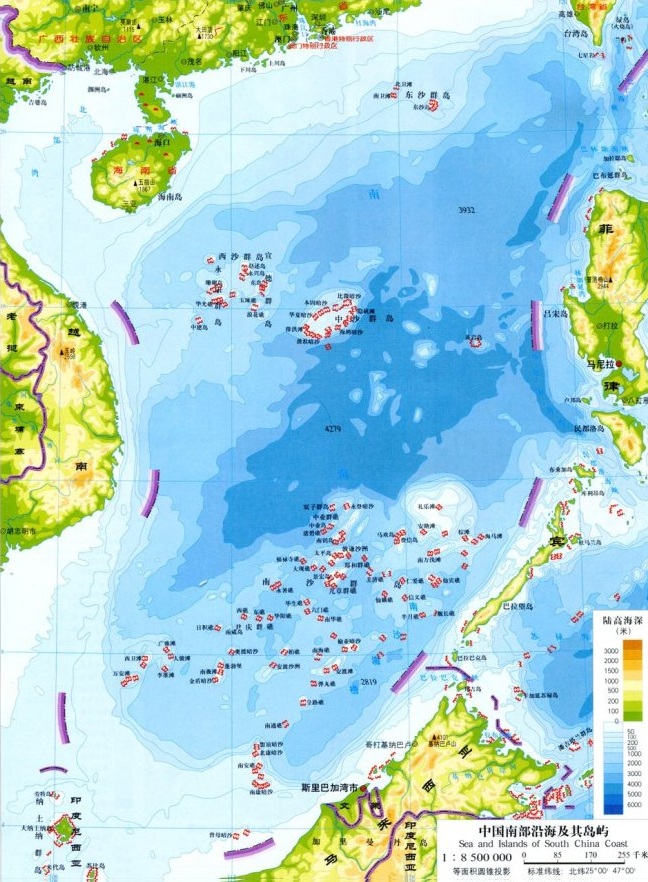博文
南海仲裁报告新闻稿及其警示
|||
一句话,这个报告就是美国过去这些年发言和主张的合编集。
实质内容就是否定了中国的九段线主权。
背后的警示是:实际控制是任何主权的前提,领土不是靠法理,而是靠实际控制。
祸害:
1、肯定了被占岛礁的被占合法性;
2、南海可能成为美国的海洋;
3、没有人居住的钓鱼岛群岛按此理由也要被日本“合理”占有;
4、颠覆了海洋法的管辖时限和范畴,是强者的工具;
……
中国唯一的有效回应应该是:
1、立刻在已经控制的岛礁驻防;
2、立刻启动在黄岩岛建设并驻防;
3、立刻拖离仁爱礁上的菲律宾破船;
4、立刻登钓鱼岛建设;
5、在法理上对仲裁庭和法官采取实质行动;
……
海牙仲裁法庭关于南海的仲裁报告pdf
-----------
Historic Rights and the ‘Nine-Dash Line’: The Tribunal found that it has jurisdictionto consider the Parties’ dispute concerning historic rights and the source ofmaritime entitlements in the South China Sea. On the merits, the Tribunalconcluded that the Convention comprehensively allocates rights to maritimeareas and that protections for pre-existing rights to resources wereconsidered, but not adopted in the Convention. Accordingly, the Tribunalconcluded that, to the extent China had historic rights to resources in thewaters of the South China Sea, such rights were extinguished to the extent theywere incompatible with the exclusive economic zones provided for in theConvention. The Tribunal also noted that, although Chinese navigators andfishermen, as well as those of other States, had historically made use of the islandsin the South China Sea, there was no evidence that China had historicallyexercised exclusive control over the waters or their resources. TheTribunal concluded that there was no legal basis for China to claim historicrights to resources within the sea areas falling within the ‘nine-dash line’.
Status ofFeatures: The Tribunalnext considered entitlements to maritime areas and the status of features. TheTribunal first undertook an evaluation of whether certain reefs claimed byChina are above water at high tide. Features that are above water at high tidegenerate an entitlement to at least a 12 nautical mile territorial sea, whereasfeatures that are submerged at high tide do not. The Tribunal noted that thereefs have been heavily modified by land reclamation and construction, recalledthat the Convention classifies features on their natural condition, and reliedon historical materials in evaluating the features. The Tribunal thenconsidered whether any of the features claimed by China could generate maritimezones beyond 12 nautical miles. Under the Convention, islands generate anexclusive economic zone of 200 nautical miles and a continental shelf, but“[r]ocks which cannot sustain human habitation or economic life of their ownshall have no exclusive economic zone or continental shelf.” The Tribunalconcluded that this provision depends upon the objective capacity of a feature,in its natural condition, to sustain either a stable community of people oreconomic activity that is not dependent on outside resources or purelyextractive in nature. The Tribunal noted that the current presence of officialpersonnel on many of the features is dependent on outside support and not reflectiveof the capacity of the features. The Tribunal found historical evidence to bemore relevant and noted that the Spratly Islands were historically used bysmall groups of fishermen and that several Japanese fishing and guano miningenterprises were attempted. The Tribunal concluded that such transient use doesnot constitute inhabitation by a stable community and that all of thehistorical economic activity had been extractive. Accordingly, the Tribunalconcluded that none of the Spratly Islands is capable of generating extendedmaritime zones. The Tribunal also held that the Spratly Islands cannot generatemaritime zones collectively as a unit. Having found that none of the featuresclaimed by China was capable of generating an exclusive economic zone, theTribunal found that it could—without delimiting a boundary—declare that certainsea areas are within the exclusive economic zone of the Philippines, becausethose areas are not overlapped by any possible entitlement of China.
Lawfulness ofChinese Actions: TheTribunal next considered the lawfulness of Chinese actions in the South ChinaSea. Having found that certain areas are within the exclusive economic zone ofthe Philippines, the Tribunal found that China had violated the Philippines’sovereign rights in its exclusive economic zone by (a) interfering withPhilippine fishing and petroleum exploration, (b) constructing artificialislands and (c) failing to prevent Chinese fishermen from fishing in the zone.The Tribunal also held that fishermen from the Philippines (like those fromChina) had traditional fishing rights at Scarborough Shoal and that China hadinterfered with these rights in restricting access. The Tribunal further heldthat Chinese law enforcement vessels had unlawfully created a serious risk ofcollision when they physically obstructed Philippine vessels.
Harm to MarineEnvironment: The Tribunalconsidered the effect on the marine environment of China’s recent large-scaleland reclamation and construction of artificial islands at seven features inthe Spratly Islands and found that China had caused severe harm to the coralreef environment and violated its obligation to preserve and protect fragileecosystems and the habitat of depleted, threatened, or endangered species. TheTribunal also found that Chinese authorities were aware that Chinese fishermenhave harvested endangered sea turtles, coral, and giant clams on a substantialscale in the South China Sea (using methods that inflict severe damage on thecoral reef environment) and had not fulfilled their obligations to stop suchactivities.
Aggravation ofDispute: Finally, theTribunal considered whether China’s actions since the commencement of thearbitration had aggravated the dispute between the Parties. The Tribunal foundthat it lacked jurisdiction to consider the implications of a stand-off betweenPhilippine marines and Chinese naval and law enforcement vessels at SecondThomas Shoal, holding that this dispute involved military activities and wastherefore excluded from compulsory settlement. The Tribunal found, however,that China’s recent large-scale land reclamation and construction of artificialislands was incompatible with the obligations on a State during disputeresolution proceedings, insofar as China has inflicted irreparable harm to themarine environment, built a large artificial island in the Philippines’exclusive economic zone, and destroyed evidence of the natural condition offeatures in the South China Sea that formed part of the Parties’ dispute.
-----------------

https://blog.sciencenet.cn/blog-73355-990233.html
上一篇:美国黑人真会玩
下一篇:南海仲裁的打手是海牙常设仲裁法院而不是海洋法